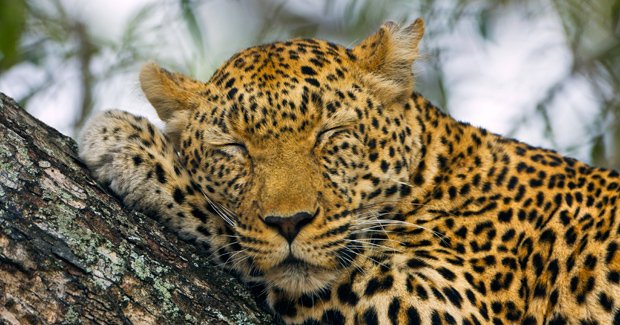Different sleep, same process

HORSES SLEEP FOR A total of three hours a day, jaguars for 10 hours a day, and dolphins do it one side of the brain at a time. While people settle down for a good six to eight hours a night, rats generally snooze in no more than six-minute stretches.
Scientists thought this variation originated from different evolutionary paths, but new research shows the system that controls sleep in people may be the same for most mammals. And this supports the idea that sleep evolved once in a common ancestor.
The sleep/wake cycle in humans is controlled by simple circuitry located in a region of the brain called the hypothalamus. Scientists from Australia and the US used a mathematical model to investigate whether this circuitry could also explain sleep patterns in a range of other mammals.
The team found that for 17 species across seven taxonomic ‘orders’ they studied, indeed, the same sleep circuitry is used.
“This suggests that the same essential physiology has been conserved across evolution,” says Andrew Phillips of the division of sleep medicine at Brigham and Women’s Hospital, Harvard Medical School, US, and the University of Sydney, who was involved in the work.
“Completely new hypothesis”
Using the model, the team also came up with some new explanations for why certain animals sleep the way the do. “We actually put forward a completely new hypothesis to explain how dolphins sleep with one hemisphere at a time,” says Andrew.
The model suggests that neurons in the hypothalamus that promote sleep actually inhibit those in the opposing hemisphere – meaning that only one half of the brain can sleep at a time.
“This is a reasonable hypothesis,” says Jerry Siegel, an expert on animal sleep at the University of California, Los Angeles. “But the dolphin actually has greatly reduced connections between the hemispheres, so it would be nice if there were some supporting data for novel inter-hemispheric connections.”
Andrew agrees that the team’s hypotheses now need to be tested. He says he’d also like to use the same model to explore other mysteries, such as the differences in physiology between animals that sleep during the day and those that are nocturnal.
A better understanding of the origins of sleep should also help researchers to understand the function of sleep, a topic that is hotly debated. “Our hope is that by developing an understanding of what aspects of sleep and sleep physiology are universal we may be able to shed light on this in the future,” Andrew says.
The research is published today in the journal, PLoS Computational Biology.

